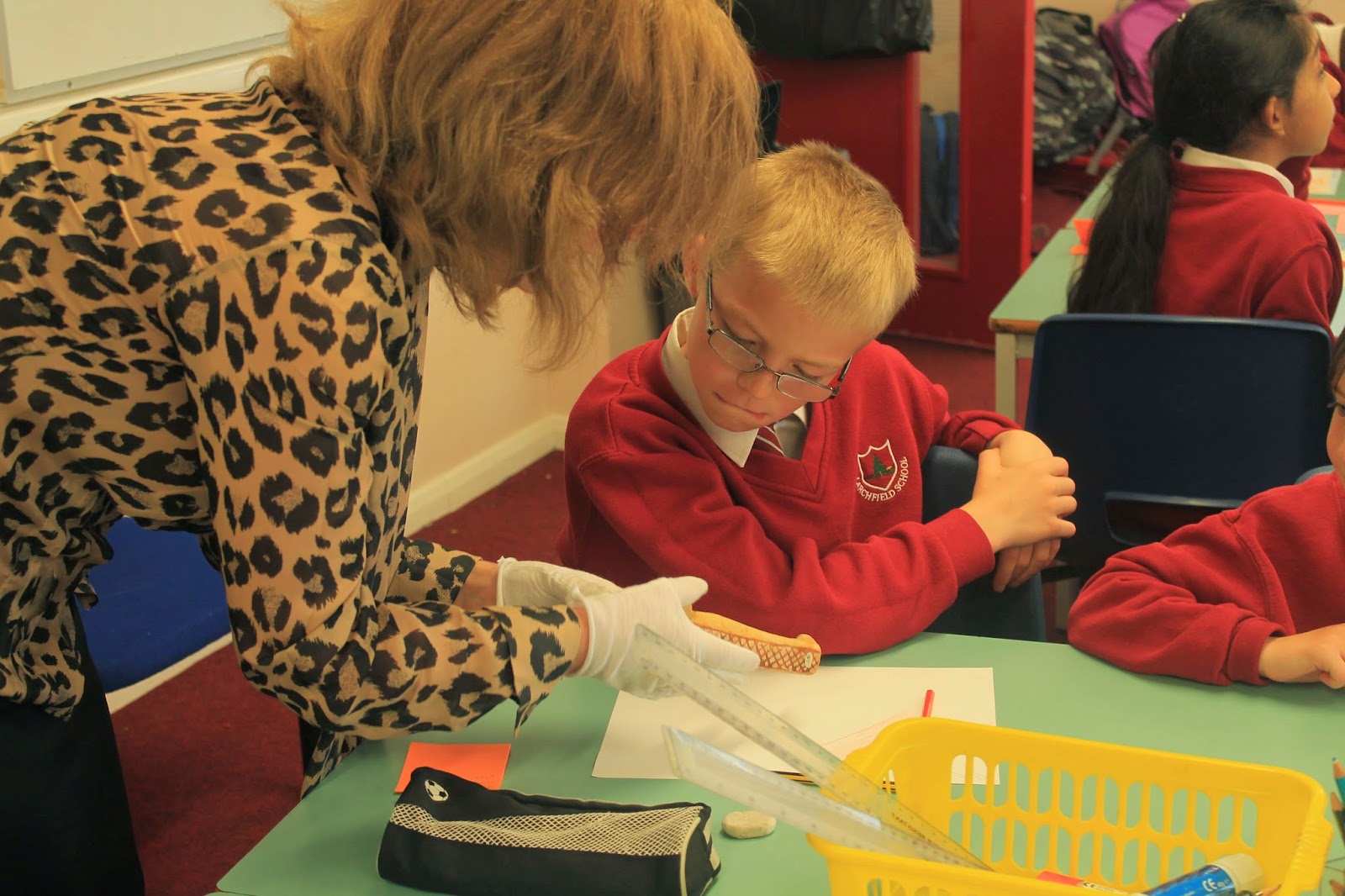As part of the Slough, Windsor and Maidenhead Museum Learning Project, Mrs Johnson's Year 4 class from Larchfield Primary School have been working on a 4 week project focusing on Ancient Egypt.
We began the project by looking at the question 'what is art?'. After a discussion the students realised that there are many different art forms that we see everyday!
The students then created a mind map of the different types of ‘art’
in Ancient Egypt, as this is the topic for our project. They came up with things such as the architecture of
the pyramids, the jewellery and hieroglyphics.
Hieroglyphics was the Ancient Egyptian writing system. Egyptians used pictures to represent different objects, actions, sound or ideas. There were over 600 hieroglyphs because they represented letters, sounds and even whole words! Year 4 learnt how to write their name in Hieroglyphs and then used an art technique called collaging to create a cartouche (A cartouche is an oval frame which surrounds the hieroglyphics that make up the name of an Egyptian God or royal person, it is meant to protect against evil spirits.)
Creating the collage cartouches...
The following week we were joined by Charlotte and Rob from Eton College Collections. Charlotte is an Exhibitions Officer and Rob is the Curator of the Ancient Egypt Collection. The
children experienced a ‘tour through a tomb’ and were shown mummified hands, scarab beetles, amulets, surrogate mummies and canopic jars. There was even a piece of bread from Egyptian times!
 |
| Hieroglyphics |
 |
| A piece of a canopic jar |
 |
| mummified hand |
 |
| A surrogate mummy! |
 |
| A mummified hand! |
 |
| A piece of bread from Ancient Egyptian times! |
As well as learning lots of new facts about Ancient Egyptians, we also learnt about working in a museum. The children prepared a list of questions to ask Charlotte and Rob about what it is like to do their job.
We found out that curators wear white gloves when handling objects because they don't want to pass on the dirt and grease on their hands to the objects (some of which are 4,000 years old!). We also learnt that depending on the type of exhibition, it can take about 9 months to put on an exhibition. Sometimes it can nerve-racking being responsible for such important objects! Finally, we learnt that most people's favourite objects to see in a museum are the ones that tell a story and get people interested in the topic!




No comments:
Post a Comment